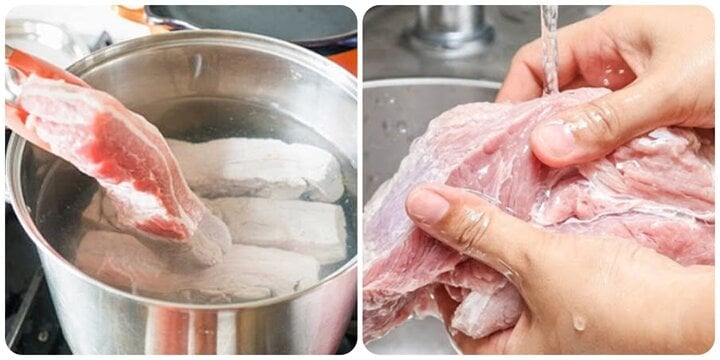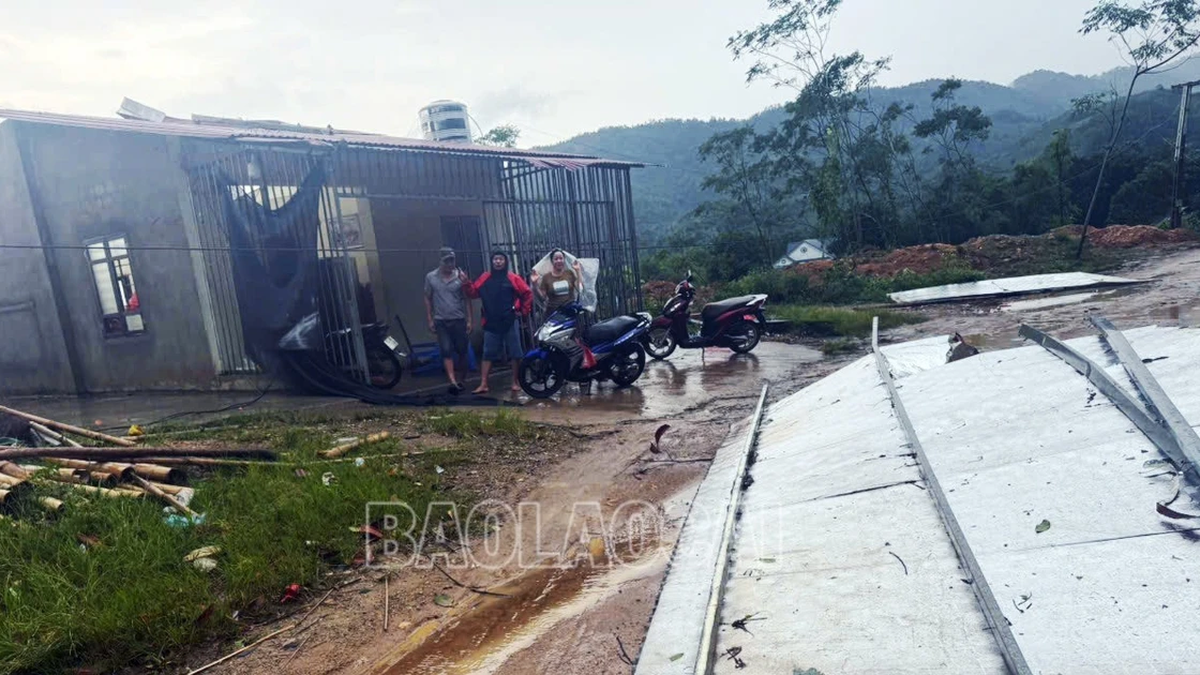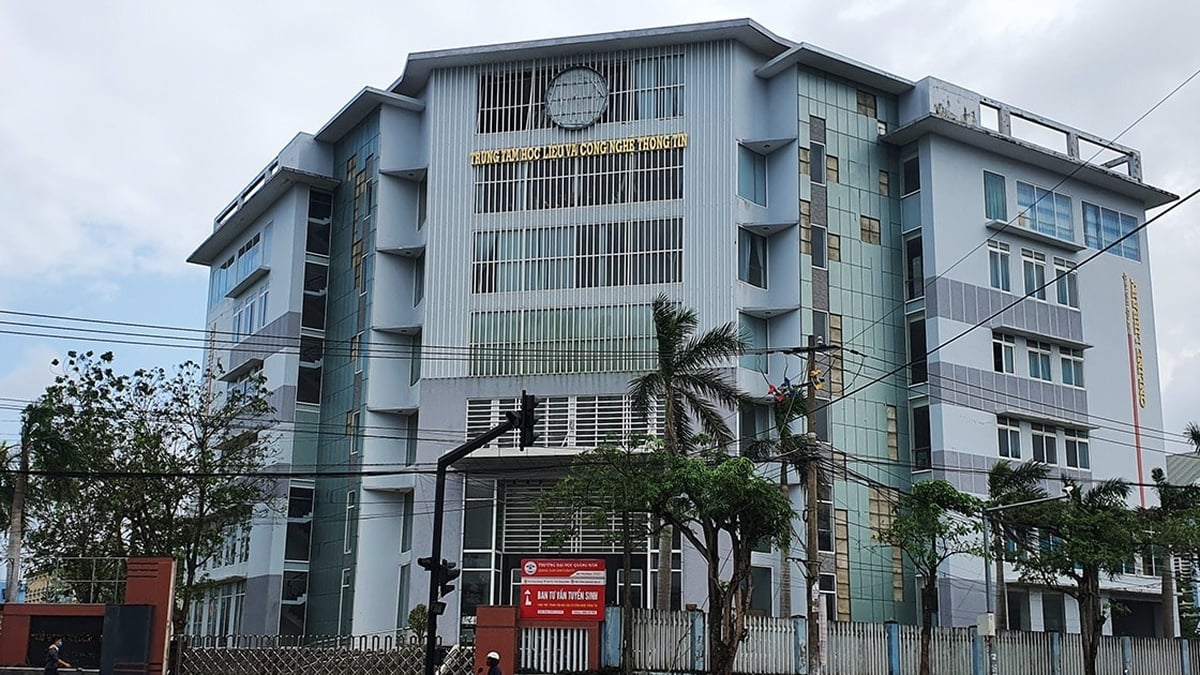Because of the fear of unsafe food, many housewives often have the habit of blanching meat in boiling water before cooking to remove toxic chemicals. So, is this method really good?
Nutritional composition of pork
Pork has all the nutritional components, it is a source of protein, fat, vitamins and minerals for the body. In 100g of pork, the nutritional components of each type are as follows:
Half lean, half fat pork: 16.5g protein, 21.5g fat, 9mg calcium, 178mg phosphorus, 1.5mg iron, 1.91mg zinc, 285mg potassium, 55mg sodium, 10µg vitamin A.
Lean pork: 19g protein, 7g fat, 7mg calcium, 190mg phosphorus, 1.5mg iron, 2.5mg zinc, 341mg potassium, 76mg sodium, 2µg vitamin A.
Fatty pork: 14.5g protein, 37.3g fat, 8mg calcium, 156mg phosphorus, 0.4mg iron, 1.59mg zinc, 318mg potassium, 42mg sodium, 2 µg vitamin A.
Should pork be blanched in boiling water before cooking?
Responding to Tri Thuc Tre, Associate Professor, Dr. Nguyen Duy Thinh (former lecturer of the Institute of Food Technology, Hanoi University of Science and Technology) said that the nutrients in meat are mainly protein (existing in the form of muscle) and fat. Vitamins and amino acids are mainly located in protein muscle cells.
Therefore, if housewives think that boiling water many times to remove chemicals and dirt in meat is a completely wrong idea.

Blanching pork before cooking is a habit of many housewives.
Associate Professor Dr. Nguyen Duy Thinh explained the reason that when meat is put into boiling water to blanch, it will cause the meat to shrink and absorb more chemicals and dirt, making the meat even more toxic.
Mr. Thinh also said that the most effective way to remove dirt and chemicals in pork is that after buying it, housewives should wash it with clean water many times.
Housewives can also use a little salt dissolved in water to wash the meat. Because diluted salt water also has the effect of removing dirt from the meat.
Mr. Thinh added that when boiling meat, housewives often see foam forming in the meat. This is actually a phenomenon where the meat still contains some dirt.
Previously, pork and chicken were often raised in households. Therefore, when eaten, the meat often had a characteristic aroma, and when processed, the meat rarely had foam.
However, nowadays, people rarely raise livestock and poultry in the traditional way anymore, but instead raise them in an industrial way. Therefore, the quality of meat has also decreased significantly and contains many impurities.
Tips for choosing good pork
To choose a good piece of pork, you need to note the following:
Color, smell of meat
One of the most popular ways to choose clean pork is to observe the color and consider the smell of the meat.
Accordingly, quality pork will have a light pink to dark red color and will not smell rancid.
When cutting the meat lengthwise, you will see the dry meat inside, the muscles are slightly contracted, the skin is soft, the fat is clear white to slightly ivory and when smelled, it does not have a strong oil smell.
In addition, when boiled, the water will be clear, with large fat scum and not much foam.
Elasticity
Clean pork is fresh meat so it has good elasticity. So when buying, use your finger to press into the meat to create an indentation but leave no trace when you lift your finger.
At this time, when observing, if you see that the meat fibers are even, firm, not mushy, elastic, not oozing or slimy, then it is good pork.
Fat layer, meat
Normally, good pork has a layer of fat about 1.5 - 2cm thick. In which, the fat layer and lean meat stick together. According to some people, the thicker the layer of fat and skin, the more it proves that the pig is not raised for weight gain.
Above is information to answer the question "Should pork be blanched in boiling water before cooking?". Hopefully this information is useful to you.
Source






























![[Photo] National Assembly Chairman Tran Thanh Man visits Vietnamese Heroic Mother Ta Thi Tran](https://vphoto.vietnam.vn/thumb/1200x675/vietnam/resource/IMAGE/2025/7/20/765c0bd057dd44ad83ab89fe0255b783)



































































Comment (0)